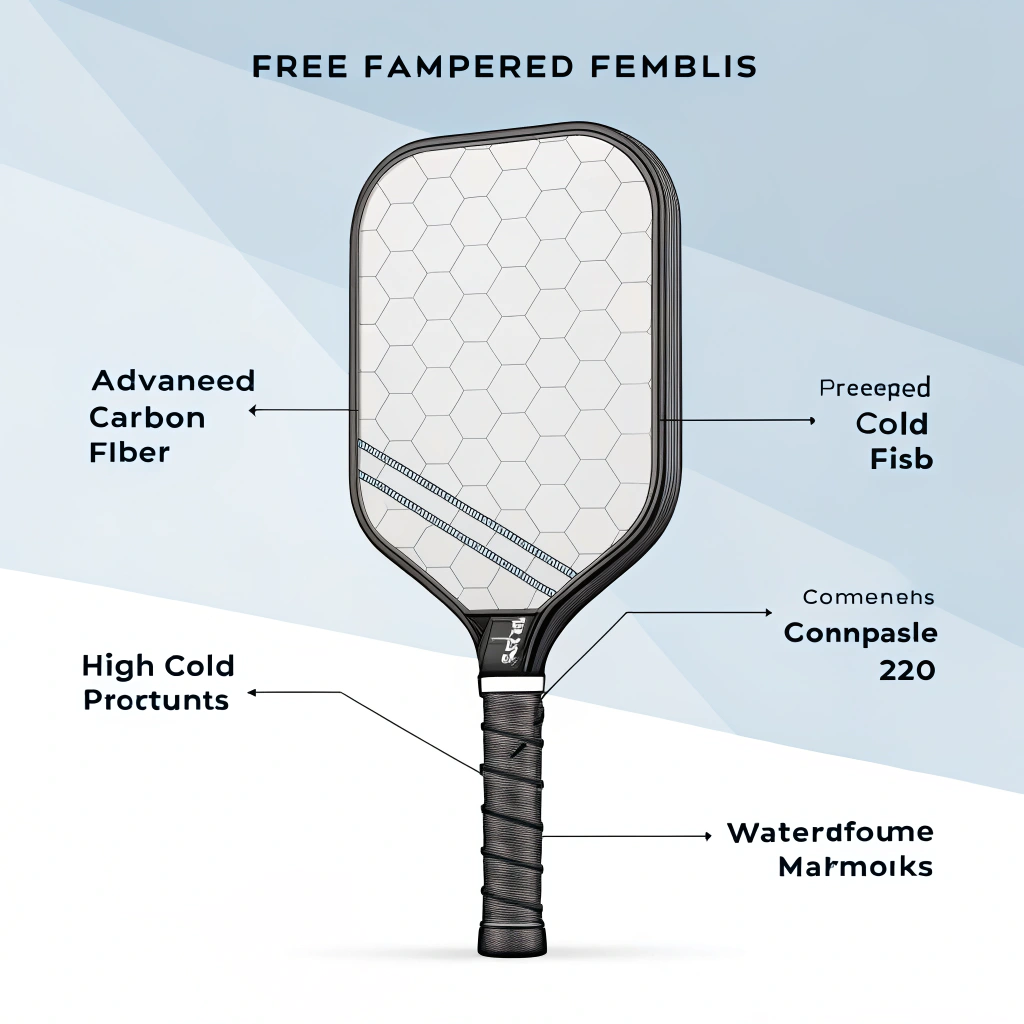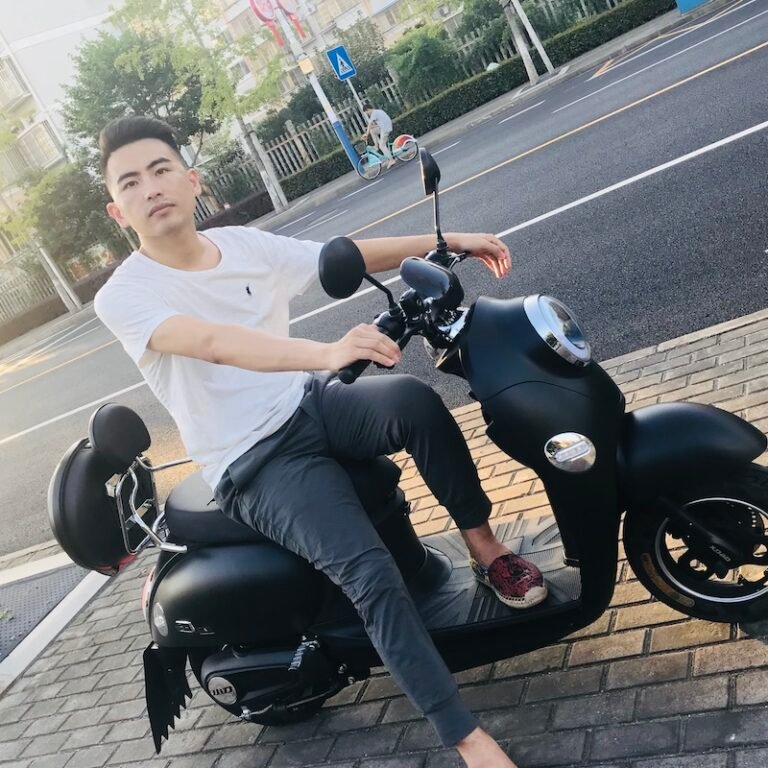A high-performance pickleball paddle can make the difference between a good game and a winning game. By understanding the intricacies of advanced production processes and material selection, B2B procurement managers can make informed decisions that enhance competitive play and drive growth.
In today’s competitive sports market, the performance of pickleball paddles plays a crucial role in player success. Many distributors and procurement managers face the challenge of sourcing equipment that not only boosts on-court performance but also delivers long-lasting durability and consistent quality. The issue arises when conventional paddles, often built with standard materials and outdated manufacturing processes, fail to provide the optimal balance of power, control, and comfort. As the demand for high-quality, technologically advanced products grows, companies must navigate a complex landscape of advanced materials – such as Carbon Fiber1, fiberglass, and composite materials – and specialized production techniques like Hot Pressing2, Cold Pressing3 and Thermoforming4.
The root causes of performance limitations in conventional paddles can be primarily attributed to:
-
Material Limitations: Standard materials often lack the sophisticated properties offered by advanced composites. For instance, while regular fibreglass provides basic control, high-grade carbon fibers such as 3K, 12K, and T300 deliver enhanced rebound force, vibration control, and durability, all of which are crucial for competitive play.
-
Production Process Constraints: Traditional manufacturing processes may not utilize advanced methods. Techniques like hot pressing, cold pressing, and thermoforming have distinct advantages, yet many older facilities still rely on outdated methods that compromise both the feel and performance of the paddle. Each production method has its own set of trade-offs, impacting key factors such as weight distribution, balance, and shock absorption.
-
Quality Control Gaps: Without rigorous, state-of-the-art quality control, even well-designed paddles can suffer from inconsistencies. Inconsistent production, faulty material bonding, or improper application of surface treatments can lead to a reduced lifespan and performance reliability.
-
Evolving Customer Demands: The modern player, especially those competing at high levels, demands equipment that is engineered with precision. A paddle that is too heavy or one that fails to absorb shock effectively can hinder performance and lead to long-term injuries or decreased competitive edge.
To solve these issues, manufacturers have turned to innovative production processes and material science. Here is a detailed solution list for B2B procurement managers looking to enhance paddle performance and maintain competitive market positioning:
-
Carbon Fiber Innovations:
Advanced 3K Carbon Fiber offers a blend of strength and flexibility. It is ideal for paddles that require a high rebound force while minimizing vibrations.
12K Carbon Fiber presents a smoother surface with increased density for higher impact resistance, making it a favorite for competitive play.
T300 Carbon Fiber strikes a balance between strength and weight, ensuring paddles are both durable and agile. -
Fiberglass Advancements:
- E-Glass Fiberglass provides excellent elasticity and control, perfect for players who need a balance of power and touch.
-
Composite Materials and Core Options:
Manufacturers are now using Carbon Fiber and Fiberglass Composite materials to combine the best properties of both. Additionally, Bamboo Core Composites and Honeycomb Cores5 – made from polymers or pulp – offer superior shock absorption and consistent performance, reducing vibration and enhancing ball control.
-
Hot Pressing:
Utilizes heat and pressure to form paddle components, ensuring high production efficiency and strong impact resistance. While it delivers durable paddles, there is a risk of altering material properties slightly, affecting the paddle's 'feel'. -
Cold Pressing:
This room-temperature technique allows for fine control over paddle thickness and structure, preserving the inherent qualities of the material. It improves responsiveness but may slow down production and demands high equipment precision. -
Thermoforming:
By heating materials to a softening point before molding them, thermoforming supports complex and intricate designs. Though it requires longer production times and higher costs, it delivers premium paddles with balanced performance metrics.
Below is a table summarizing the key differences between these processes:
| Production Process | Key Advantage | Main Disadvantage | Best For |
|---|---|---|---|
| Hot Pressing | High efficiency and strong impact resistance | Potential alteration of material properties | Large-scale manufacturing |
| Cold Pressing | Precise control and preservation of material properties | Longer production cycles | Customized and high-control designs |
| Thermoforming | Complex designs and excellent material distribution | Higher equipment cost and longer production times | Premium, custom-made paddles |
When considering advanced manufacturing processes and material usage, companies must keep several key points in mind:
-
Equipment Investment: Investment in advanced machinery (required for cold pressing or thermoforming) can be high; hence, budget constraints must be assessed carefully against potential return on investment.
-
Process Suitability: Not every material or paddle design may suit a particular production method. Manufacturers must match the production process with the material characteristics and the desired paddle performance outcome.
-
Quality Assurance: Regardless of the process chosen, implementing repeatable quality checks at every stage of the production cycle is essential. Advanced testing methods can isolate variations early on, ensuring that every paddle meets the high standards expected by competitive players.
-
Customization Demand: For B2B clients, having the option for specialized customization (e.g., adjustable grip sizes or personalized design elements) can be a significant differentiator. However, this often requires modifications in both production line and quality control protocols.
NEX Pickleball exemplifies how embracing advanced materials and production processes can result in high-performance paddles that meet both professional and recreational standards. As a leading manufacturer in Jiaxing, Zhejiang, China, NEX Pickleball leverages the following strategies:
-
Material Diversity:
The integration of both high-grade carbon fibers (3K, 12K, T300) and premium composite materials allows NEX Pickleball to produce paddles optimized for various playing styles. This material diversity means that no matter if the player requires sharp control or explosive power, there is a paddle that meets these needs. -
Process Innovation:
By adopting hot pressing, cold pressing, and thermoforming where appropriate, NEX Pickleball tailors each production run to ensure maximum performance. Each process is chosen to maintain the ideal balance, rigidity, and shock absorption most critical for competitive play. -
Rigorous Testing:
Every paddle is subjected to end-to-end quality testing, from weight distribution and ergonomic grip analysis to surface texture treatment. This testing ensures that every paddle not only meets theoretical performance criteria but is also validated in rigorous game-like conditions. -
Customization and Branding:
NEX Pickleball stands out by offering on-demand print services on paddles, allowing teams and distributors to integrate branding and customization. This service is not just an aesthetic upgrade – it enhances market value and meets the specific operational requirements of teams and retailers.
A clear outcome of these practices is the consistent positive feedback from high-level distributors and competitive sports teams, which confirms that investing in quality materials and tailored production processes leads to superior game performance and enhanced player satisfaction.
To stay ahead in today’s competitive equipment market, B2B procurement managers must recognize the value of high-performance pickleball paddles, which are built on advanced materials and refined production processes. By ensuring that the selected paddles incorporate high-quality Carbon Fiber, optimized composite materials, and production techniques like hot pressing, cold pressing, and thermoforming, companies can provide their clients with products that offer unmatched durability, control, and performance.
For distributors and procurement managers, moving towards suppliers who continuously innovate and maintain rigorous quality standards can lead to significant competitive advantages. In a market where every incremental performance gain can translate into winning moments on the court, investing in superior paddle design is both a strategic and necessary decision. Consider evaluating your current equipment sources and exploring partnerships with leading manufacturers like NEX Pickleball, who combine technical expertise with cutting-edge production technology. The right equipment not only elevates player performance but also fortifies your market presence and brand reputation.
Q1: How do manufacturing processes affect paddle performance?
A1: Manufacturing processes such as hot pressing, cold pressing, and thermoforming significantly affect factors like weight distribution, core integrity, and surface finish. These processes determine the paddle’s responsiveness, durability, and overall playing feel, which are crucial for competitive performance.
Q2: What benefits do different carbon fiber types offer for competitive pickleball?
A2: Different carbon fiber types provide varied advantages. For example, 3K Carbon Fiber offers a good balance of strength and flexibility, 12K Carbon Fiber gives enhanced durability with a smoother finish, while T300 Carbon Fiber is optimal for balancing strength and lightweight performance. These variations allow manufacturers to tailor paddles to specific play styles and performance requirements.
Q3: How does NEX Pickleball ensure product quality and durability?
A3: NEX Pickleball uses advanced production techniques paired with rigorous quality control tests at each production stage. Combining multiple materials and employing processes like hot pressing, cold pressing, and thermoforming ensures that every paddle offers consistent performance, durability, and a high level of control for players at all levels.
-
Carbon Fiber: Reading this article will provide insights into the properties, manufacturing innovations, and benefits of carbon fiber in enhancing product performance and durability. ^Return ↩
-
Hot Pressing: Clicking here will explain how hot pressing technology uses heat and pressure to mold materials efficiently, detailing its advantages and potential impact on product feel. ^Return ↩
-
Cold Pressing: This resource breaks down the cold pressing technique, highlighting its benefits in maintaining material integrity and achieving precise control during manufacturing. ^Return ↩
-
Thermoforming: Learn about thermoforming processes, including how heating materials to a pliable state facilitates complex designs and superior material distribution in products. ^Return ↩
-
Honeycomb Cores: Explore the engineering behind honeycomb cores, including how they contribute to shock absorption and consistent performance in high-demand applications. ^Return ↩







